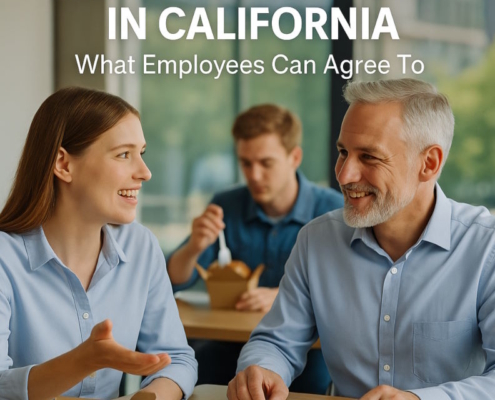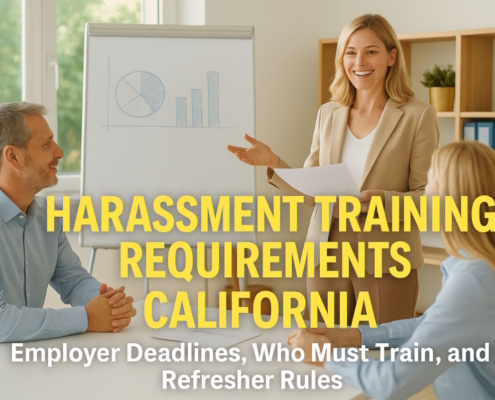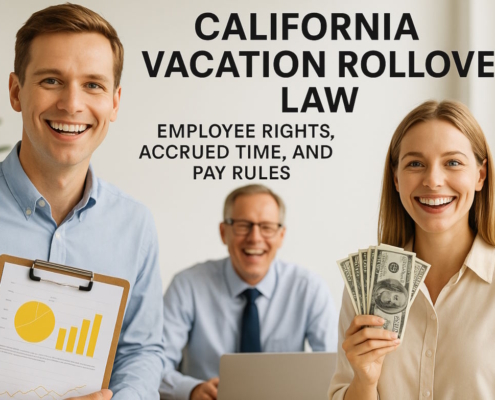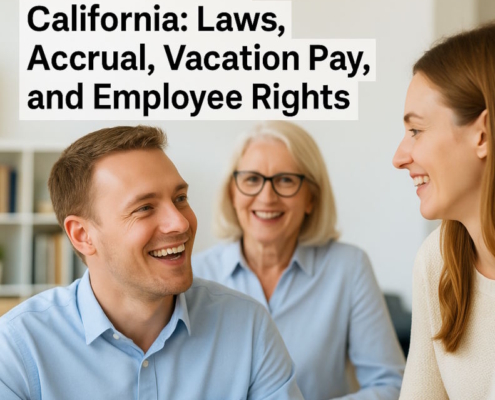Employee Management
Employee management is the process of aid employees to do their best work daily to achieve the company’s goal. Employee management helps improve employee satisfaction and productivity to help a company achieve its overall goals.
By Douglas Wade, Attorney
Email | Call (800) 484-4610
Employee management process
What is employee management process? Whether its a large company or managing employees in small business, employee management process is when an employer helps his or her employees do their best work every day so that the company achieves its goals. This concept includes a number of duties and tasks, though most of them can be grouped into one of five employee management processes:
- Selection
- Monitoring
- Interaction
- Reward
- Discipline
Selection refers to identifying and hiring the best candidates for open positions within the company so that teams and departments may continue to operate without a hitch.
Monitoring involves evaluating an employee’s performance, which may also be referred to as performance management.
Interaction refers to the daily exchanges between managers and colleagues, which includes communicating job expectations, feedback, company culture, and more.
Reward refers to the offer of praise, monetary prizes, and recognition. These incentives can be used to encourage high performance among employees.
Discipline refers to the strategies managers use to improve low performance, fix errors, and enforce the company’s standards and policies. A good manager will recognize an employee’s best efforts while also challenging them to improve their work.
How Do Companies Manage Their Employees?
One of the most vital parts of any employee management system is caring for one’s employees, which can take a number of forms:
- Caring about every employee equally
- Promoting a stable work environment
- Ensuring employment security
An employer can demonstrate his or her care for their employees by offering everyone the same benefits. For instance, he or she might get rid of executive parking spots and premium healthcare that is only offered to higher-ups. Everyone, whether they are CEO or intern, should have the opportunity to do well and enjoy their time at the company.
When thinking about the employees’ work environment, an employer should first consider the office space. Is there enough room for employees to work in comfort? Are the employees working next to people they like, or are incompatible people seated beside one another? Is the company’s location convenient for employees? Is there access to public transportation for those who do not have access to cars? Are there good public school options for those employees with families? The goal of an employer should be to make the lives of his or her employees comfortable both inside and outside of the office.
Every employee is focused on job security. An employee should not have to worry about his or her job after every performance review. By setting long-term goals, an employer can keep his or her employees focused on the future. Employers practicing good employee management would assign them special projects that show the employer trusts their skills and believes them to be competent. When the economy has a downturn, it may be better to choose temporary pay cuts and hiring freezes rather than lay-offs.
What Is the Best Method to Manage Employees?
The following guidelines may be used to create an effective employee management strategy:
- Be Consistent: Consistency allows employees to have base expectations, which will give them a sense of security.
- Use Clear Communication: Focus on being clear, accurate, and thorough in every kind of communication. When an employee poses a question, their employer should be prompt in responding. Transparency is important.
- Recognize Hardworking Employees: By rewarding employees in front of their peers, everyone is reminded that their hard work is encouraged and rewarded. This will help employees improve.
- Treat Employees Like Individuals: Everyone should be treated fairly and equally, but employers should play to their employees’ individual strengths. Different strategies will work for different employees.
- Encourage New Opinions and Ideas: When discussing how to improve the company, get as many people involved as possible.
- Act as an Example: Employees will look to their managers to see how they should act in the workplace.
How to Manage an Employee with a Bad Attitude
When a manager must deal with an employee with a bad attitude, it can be difficult to motivate them to make changes or otherwise modify their behavior. If the individual is producing good work, it may be tempting to let them be. However, a bad attitude can negatively impact other workers, and the company culture can suffer as a result. Many times, HR would contact our lawyer that represent employers to assist.
Therefore, employee management involves giving priority to the following:
- Give Feedback and Examples: It doesn’t help to simply tell them they have an attitude problem. Instead, identify specific behavior and show how it negatively affects other employees.
- Give Advice: An employer should explain to the employee how they should have behaved in specific situations. Providing this example can set a template for how to act in the future.
- Recognize What is Good: An employer should not focus the performance review on how the employee can improve. Instead, they should also talk about the good work they are doing.
- Watch Behavior and Performance: An employer should see if the employee’s behavior improves over time. It may help to set up regular meetings to review their progress.
Have a quick question? We answered nearly 2000 FAQs.
See all blogs: Business | Corporate | Employment
Most recent blogs:































